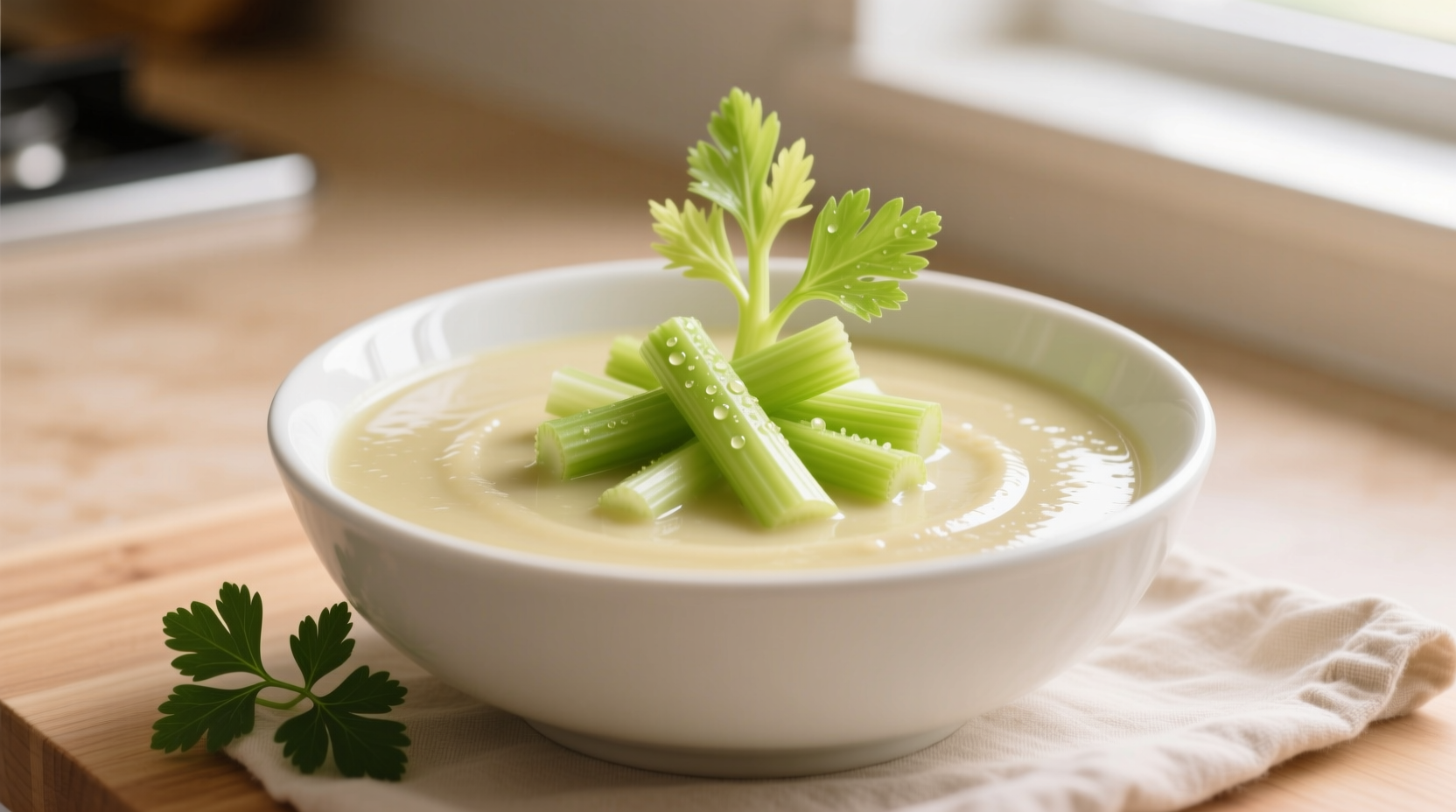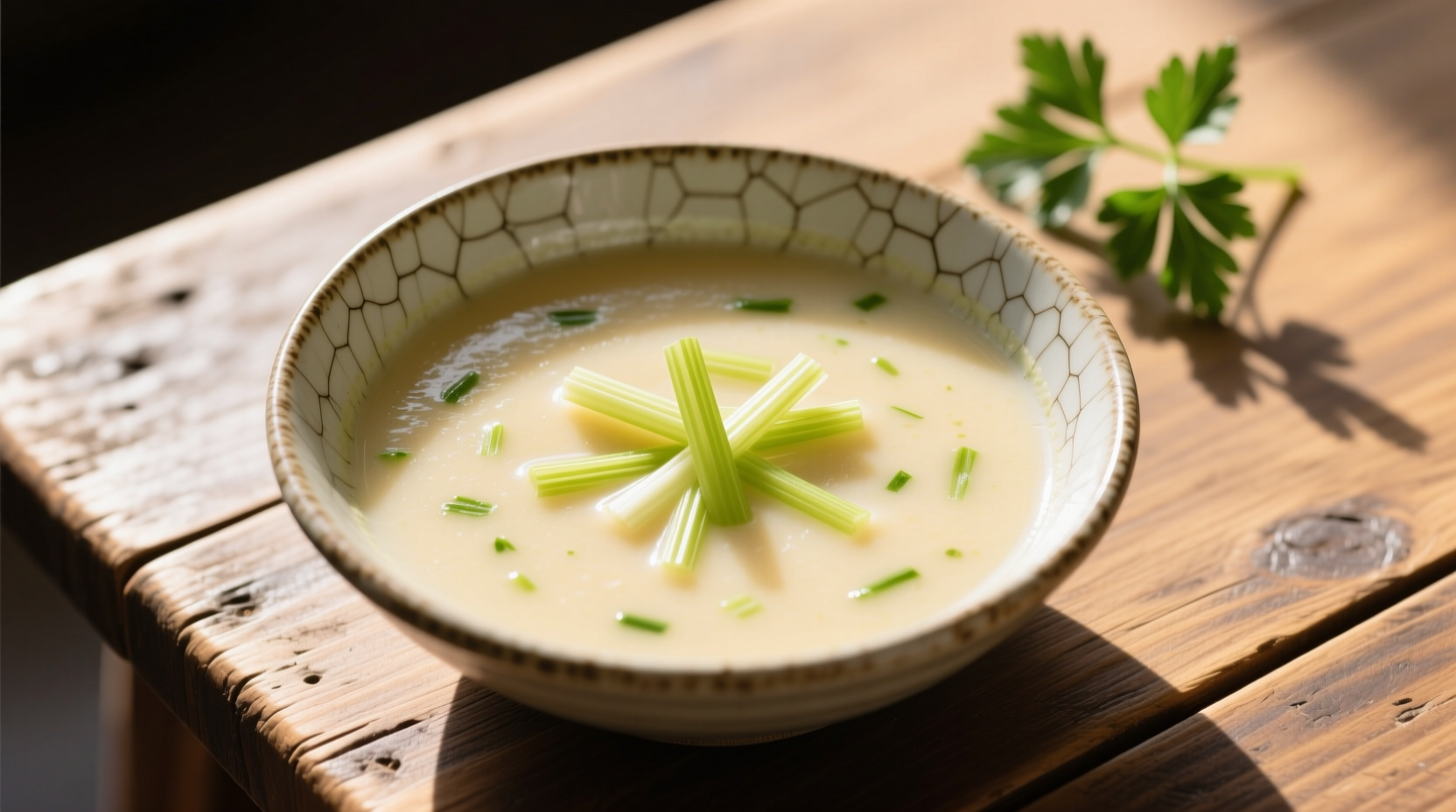When you reach for that can of cream of celery in your pantry, you're tapping into a culinary shortcut that professional kitchens have relied on for decades. As a chef who's worked with this ingredient in both five-star restaurants and home kitchens, I've seen how this simple product transforms ordinary meals into something special with minimal effort.
What Exactly Is Cream of Celery?
Cream of celery isn't just soup in a can—it's a carefully balanced culinary building block. Unlike homemade celery soup which varies with each preparation, commercial cream of celery maintains consistent flavor, texture, and thickness batch after batch. The standard formulation includes:
- Celery (typically 15-20% of content)
- Wheat flour or other thickening agents
- Vegetable or chicken broth
- Cream or milk solids
- Seasonings (onion powder, garlic powder, salt)
- Natural flavorings
According to the U.S. Food and Drug Administration's guidelines on soup labeling, products labeled "cream of" must contain at least 50% of the named vegetable content by weight in the finished product.

How Cream of Celery Evolved: From Kitchen Staple to Pantry Essential
The story of cream of celery begins in early 20th century American kitchens, long before it became the pantry staple we know today. Understanding this timeline helps explain why it remains relevant in modern cooking:
| Time Period | Development | Impact on Home Cooking |
|---|---|---|
| 1920s-1930s | First commercial cream soups introduced | Provided consistent base for home cooks during food rationing |
| 1940s-1950s | Canned versions became widely available | Enabled quick casseroles during post-war cooking boom |
| 1970s-1980s | "Convenience cooking" peak | Became essential for "from-scratch" appearing dishes with minimal effort |
| 2000s-Present | Health-conscious formulations emerge | Lower-sodium, organic, and gluten-free options now widely available |
Practical Applications: When Cream of Celery Shines
Knowing exactly when and how to use cream of celery separates adequate home cooking from truly impressive results. This ingredient excels in specific culinary scenarios while falling short in others:
Ideal Applications
- Casseroles: Creates perfect binding texture in tuna, chicken, or vegetable casseroles without making them watery
- Sauces: Forms instant creamy bases for pasta sauces, especially with mushrooms or seafood
- Gravies: Adds vegetable depth to pan gravies without requiring separate mirepoix preparation
- Stuffings: Provides moisture and flavor in bread-based stuffings without sogginess
Situations Requiring Modification
- Gluten-free needs: Use cornstarch-thickened varieties or make your own with pureed celery and broth
- Low-sodium diets: Dilute with additional broth and boost flavor with fresh herbs
- Creamy soups: Works as base but requires additional fresh celery for optimal flavor
Nutritional Profile: What's Really in That Can
Understanding the nutritional content helps you make informed decisions about incorporating cream of celery into your cooking. According to USDA FoodData Central measurements for standard cream of celery soup:
- Per 1/2 cup serving: Approximately 60-80 calories
- Sodium content: Ranges from 400-800mg (20-35% of daily value)
- Fat content: 2-4g, primarily from cream or oil ingredients
- Fiber: Minimal (about 1g per serving)
- Vitamins: Provides small amounts of vitamin K and potassium from celery content
For those monitoring sodium intake, the American Heart Association recommends no more than 2,300mg daily, with an ideal limit of 1,500mg for most adults. Using low-sodium cream of celery varieties or diluting regular versions with additional broth can help manage sodium levels.
Professional Techniques for Maximum Flavor
As a chef who's used cream of celery in both professional and home kitchens, I've developed techniques that elevate this humble ingredient:
- The Flavor Boost: Sauté 1/4 cup diced fresh celery and 2 tablespoons onion in butter before adding the cream of celery—this adds fresh vegetable notes that compensate for the cooked flavor of canned product
- The Texture Fix: For sauces that need more body, mix 1 tablespoon cornstarch with 2 tablespoons cold water before stirring into heated cream of celery
- The Fresh Finish: Stir in 1-2 tablespoons of heavy cream at the end of cooking for richer mouthfeel and brighter appearance
- The Flavor Bridge: Add a teaspoon of Dijon mustard to cream of celery when using in casseroles—it connects the vegetable notes with meat flavors
Storage and Shelf Life Guidelines
Proper storage ensures your cream of celery maintains quality and safety. Following FDA food safety recommendations:
- Unopened cans: Store in cool, dry place for 18-24 months
- After opening: Transfer to airtight container and refrigerate for 3-4 days
- Freezing: Pour into ice cube trays, freeze, then transfer cubes to freezer bags for up to 3 months
- Signs of spoilage: Sour smell, mold, or separation that doesn't reincorporate when stirred
Remember that cream-based products separate when frozen and thawed, but vigorous whisking while reheating typically restores the emulsion.
Creative Recipe Ideas Beyond the Casserole
Move beyond the standard tuna casserole with these professional-inspired applications:
- Creamy Herb Dip: Mix one can with 1/2 cup sour cream and fresh dill for instant vegetable dip
- Seafood Sauce: Combine with lemon juice and Old Bay seasoning for crab or shrimp dishes
- Pasta Primavera: Use as base for spring vegetable pasta with asparagus and peas
- Breakfast Gravy: Thin with milk and season with black pepper for biscuits and gravy











 浙公网安备
33010002000092号
浙公网安备
33010002000092号 浙B2-20120091-4
浙B2-20120091-4